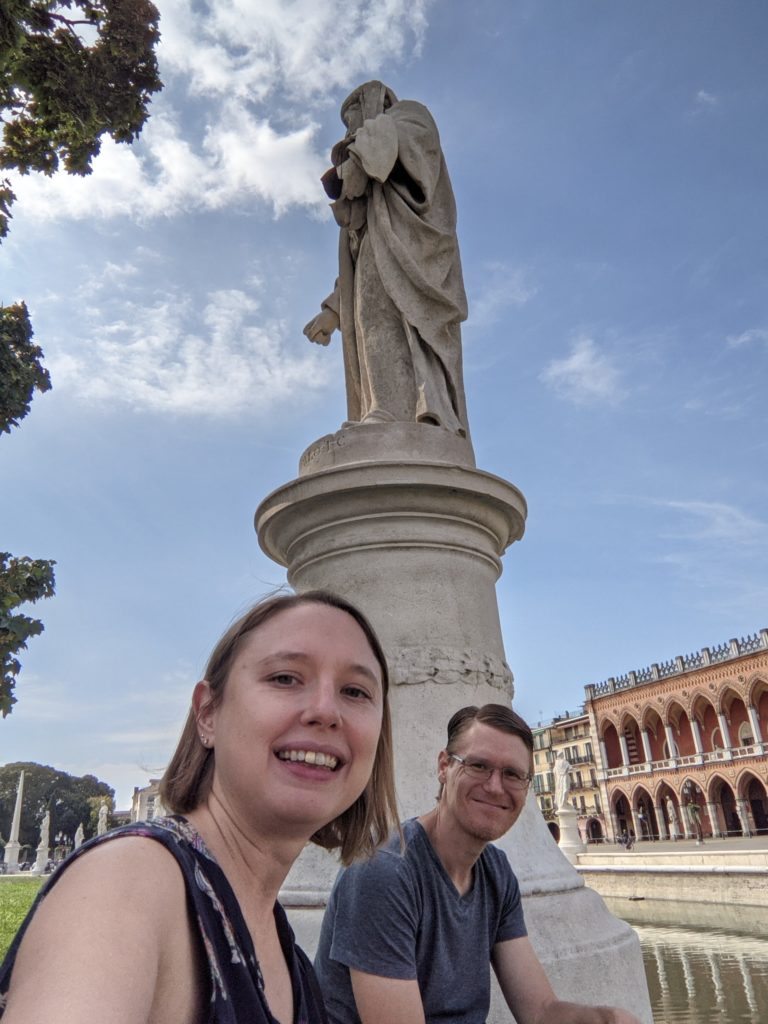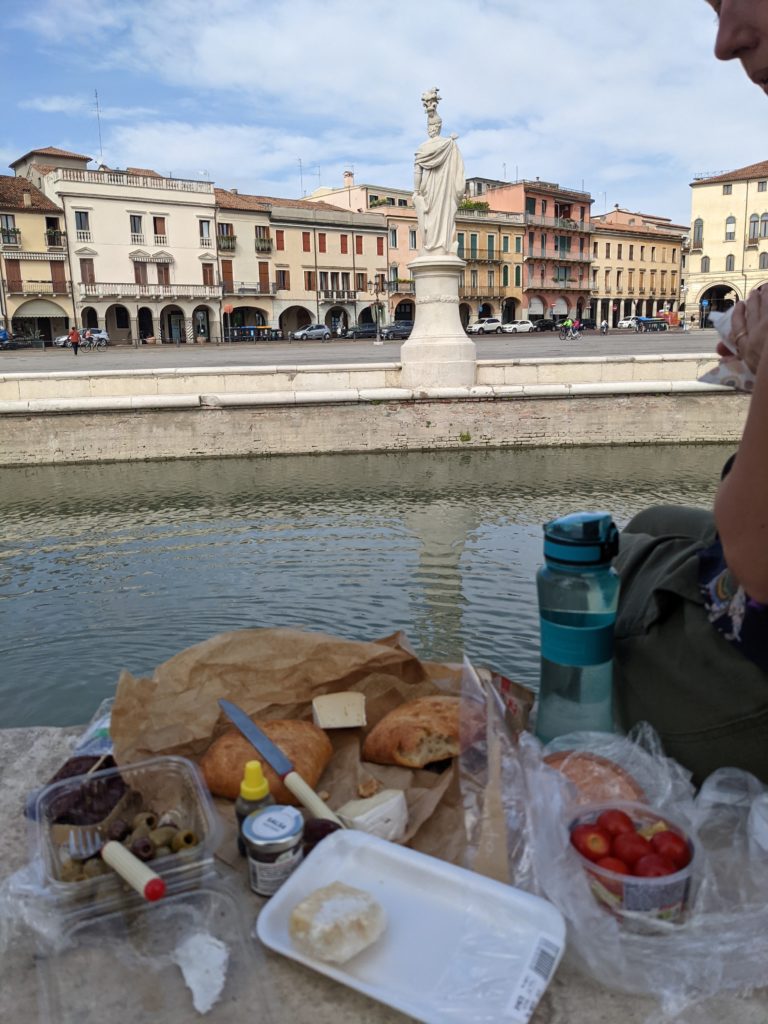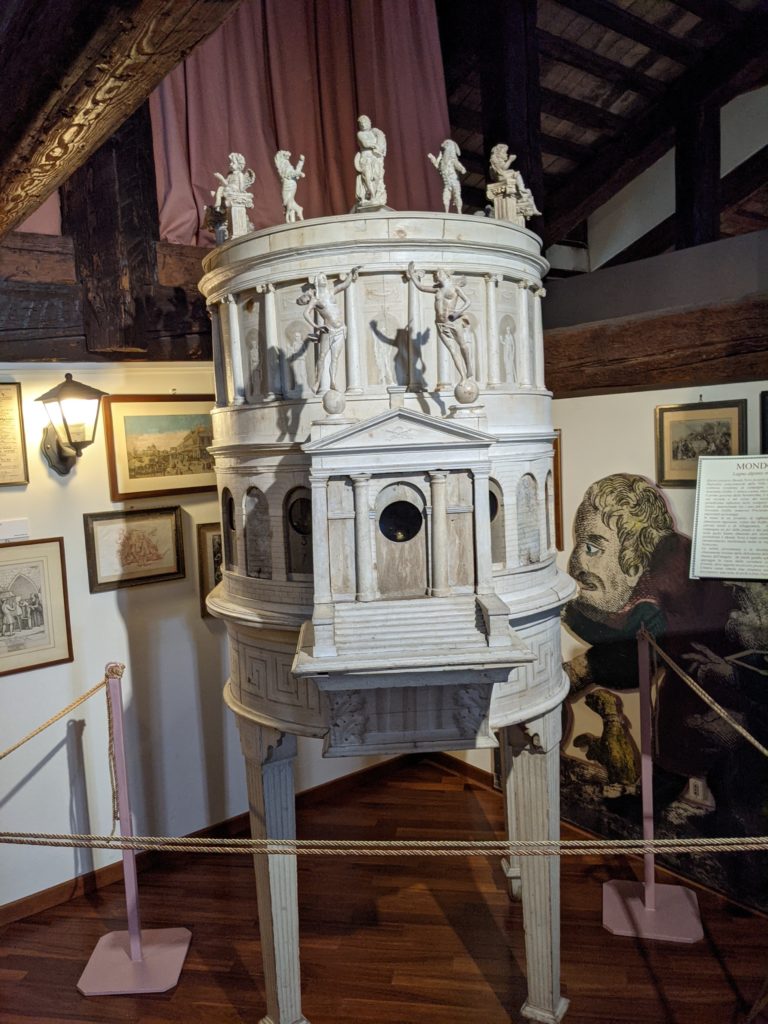Padova (the Italian spelling of Padua) was the perfect first long stay for our return to international travel. In addition to our wonderful day trips to Modena, Bologna, Venice, and Ferrara, we saw and did tons of awesome stuff in this university town. Here are our experiences with the sites of Padova:
University of Padova/Palazzo Bo
One of our top priorities was to visit the University of Padua, which will celebrate its 800th birthday next year in 2022. You can only visit by guided tour, which are offered five times per day – twice in English and three times in Italian. I booked an English tour online for a late afternoon and we joined about 20 other people to be shown the history of the university at Palazzo Bo, one of the main historic buildings. It is called Palazzo Bo after the Italian word for ox, which was the symbol of the university. In the early days, classes just met in professors’ homes, but eventually (like 600 years ago) they purchased a former hotel to create offices and classrooms, which are still in use today.
We learned that the university was established by teachers and students from the University of Bologna (pretty much the only European university that is older) who wanted more academic freedom, and throughout its history freedom has been a core tenet. So it is no wonder that a forward-thinker (and accused heretic) like Galileo would spend most of his teaching career there.
The courtyard of the Palazzo Bo is decorated in coats of arms much like we saw at the university in Bologna. We learned these represent the elected student leaders, though the practice was done away with in the 17th century. Many of them were from foreign lands because the rules stated a certain number of representatives had to come from the foreign students. Our guide explained that in most of the school’s history, students had a lot more power than they do today.
After leaving the courtyard, we were taken into a room called the sala dei quaranta, named for the 40 portraits on the walls of famous people who studied at the university. This is also where they store Galileo’s podium, which his students built to for him to stand on during lectures because he drew such crowds. Chad was especially excited to see this. From this room we could also see into the grand lecture hall, which is still used for special events.
The tour also included Padova’s anatomy theater, which is much larger than the one in Bologna. Because this university was not directly connected to the Catholic church (unlike most other universities, including the one in Bologna), they were able to do more human dissections for instructing their medical students. They still needed permission from a Venetian bishop, but were able to obtain it and keep the anatomy theater open throughout. Bologna’s that we toured earlier is a reconstruction. Though prettier, it was definitely not as impressive as Bologna’s.

Model of the anatomy theater 
Inside the anatomy theater looking up 
First woman graduate
The last sight on the tour was a statue honoring the first woman graduate of the University of Padova, who is also the first woman graduate of any university in the world. Her name was Elena Lucrezia Cornaro Piscopia and she got her degree in philosophy in 1678 (she’d wanted to study religion, but that was forbidden to women; 17th century baby steps). It was very cool to see this marker to an early glass ceiling breaker.
Basilica of St. Anthony
Although we lived right next door to the town duomo (the cathedral), the most impressive church in town is the Basilica of St. Anthony, which is located near the big public square, Prato della Valle (more on that below). We first visited on a rainy Saturday morning that we felt like getting out. Antony of Padova was a catholic priest born in Portugal who served in Padova and was known for his preaching and teaching. His tomb is in the basilica and people can touch the wall of it and say a prayer. We saw numerous visitors do this.
The basilica also includes a number of relics housed in its cappella delle reliquie (chapel of relics), which includes St. Anthony’s tongue and jawbone, three thorns from the crown of thorns, and a piece of the true cross, as well as other relics tied to various saints. We may doubt the provenance of the thorns and cross fragment, but they are certainly items the basilica has treasured for many centuries and it was cool to see how they were displayed.

Exterior 
Main part of the church 
Where St. Antony’s tomb is 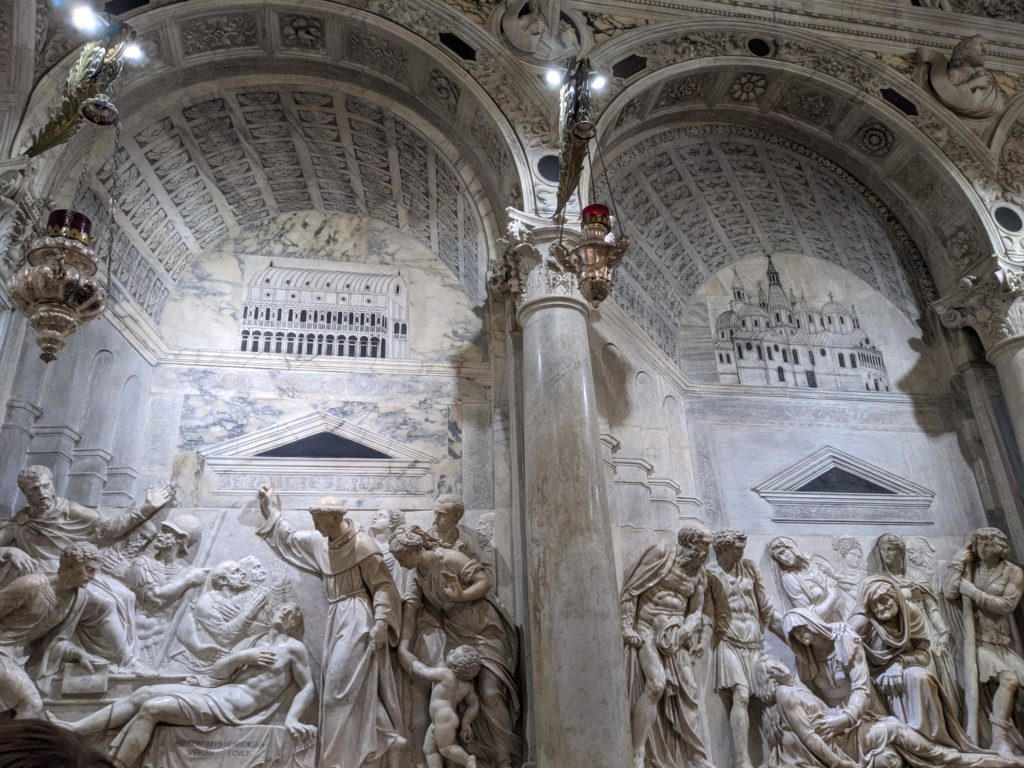
Friese near St. Antony’s tomb 
St. Antony’s jawbone 
Piece of the true cross encased in the little glass window at the enter of the cross.
Museum of Pre-Cinema on the Prato della Valle
The Prato della Valle is one of the largest public plazas in Europe and has a very cool oblong shape and dozens of statues. On our main day for tourist fun, we started with a picnic at this plaza, which is near to many attractions. It is always lively and full of people and we enjoyed our picnic there very much.
The plaza is encircled by buildings with porticoes and one of these houses the Museum of Precinema. It is not in the spot identified on Google maps, but several doors down. Given the topic of our new film and Chad’s long-time interests, this was a must-see for us so we persevered and tracked it down. There is a small sign and you have to ring the doorbell for admission and then climb three flights of stairs, but it was worth it.
There was a short film to watch about the days before cinema and then a staff member showed us the highlights of the museum. We were the only visitors the whole time we were there, but it was a weekday afternoon. Then we spent some time on our own looking more closely at the items. It was really cool to see the various items people had as the idea of moving images developed into what would eventually be film. The highlight was probably the camera obscura, which was pointed out on Prato della Valle right where we’d picnicked.
University Botanical Garden (a UNESCO world heritage site)
Between our picnic and the museum, we visited the Botanical Garden of the University of Padova. It was no accident we were seeing many sights in the same day because we purchased a three-day Padova tourism card and it included discounted admission to the garden and also the pre-cinema museum. And I love a good travel deal!
The botanical garden was definitely worth seeing, not only because it was the first in the world when it was built by the university in 1545. That is why it was recognized by UNESCO in 1997 and it was definitely cool to see how they laid out the various beds in the old part of the garden. But it still functions for research and displaying unique flora and we also enjoyed the modern tropical greenhouses. It only takes about an hour to walk through the whole of the garden and was very pleasant.

tropical greenhouse 
arid greenhouse 
lilypads 
old part of the garden 
Goethe’s palm encased in the back 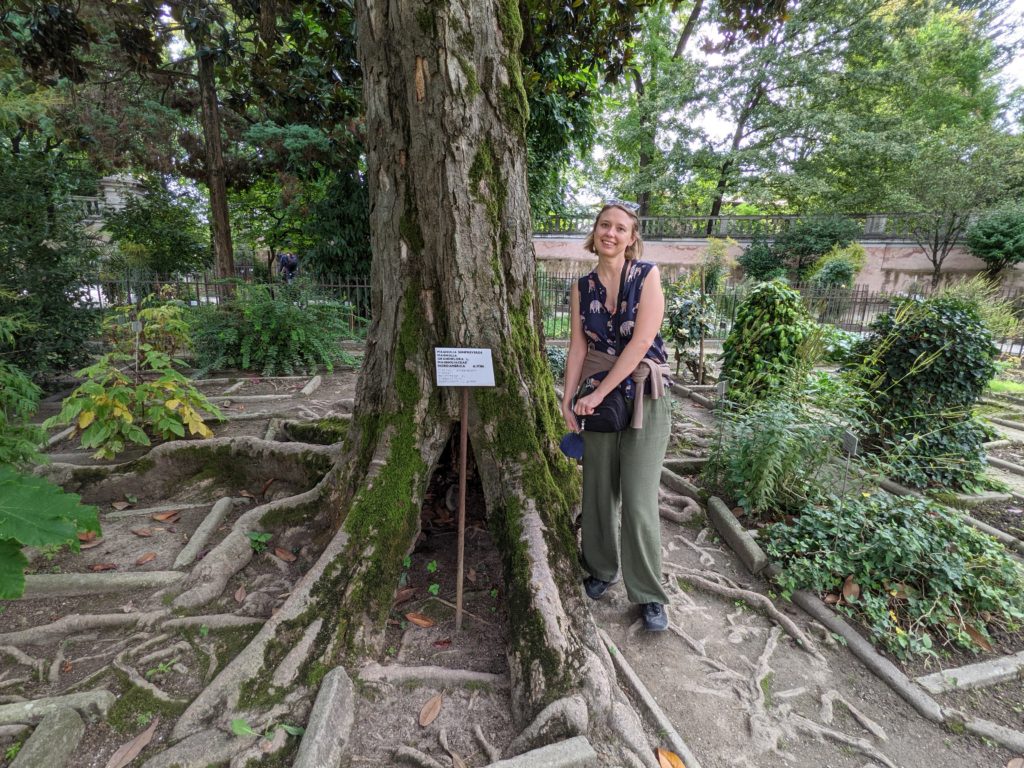
oldest magnolia in Europe
Padova Frescoes (designated world heritage by UNESCO in 2021)
The biggest attraction in Padova right now, though, is probably the Scrovegni Chapel, which, along with Padova’s other 14th century frescoes, achieved UNESCO world heritage recognition about a month before we arrived in Padova.
I believe the Scrovegni Chapel was already a Padova must-see attraction because of the importance of the artist who painted the frescoes, Giotto. It can only be seen by advanced reservation made online or by phone, but I never was able to get their website purchase portal to work. I probably called about 20 times in all because after 5 minutes on hold, the phone system disconnects you, but I finally got through. Chapel admission is actually included with the Padova tourism card, which doesn’t cost very much more than admission by itself, making the Padova card a really great deal.
The Padova card also includes free admissions to a few other attractions featuring frescoes, including the Palace of Reason, which is the huge building on the squares near our place, and the baptistry of the duomo. So, we visited those attractions earlier in the day, had a nice lunch break on the square, and then went out later to visit the two museums nearest the chapel grounds and the Scrogveni itself.

Palace of Reason 
Famous horse inside Palace of Reason 
Tourism expo inside Palace of Reason 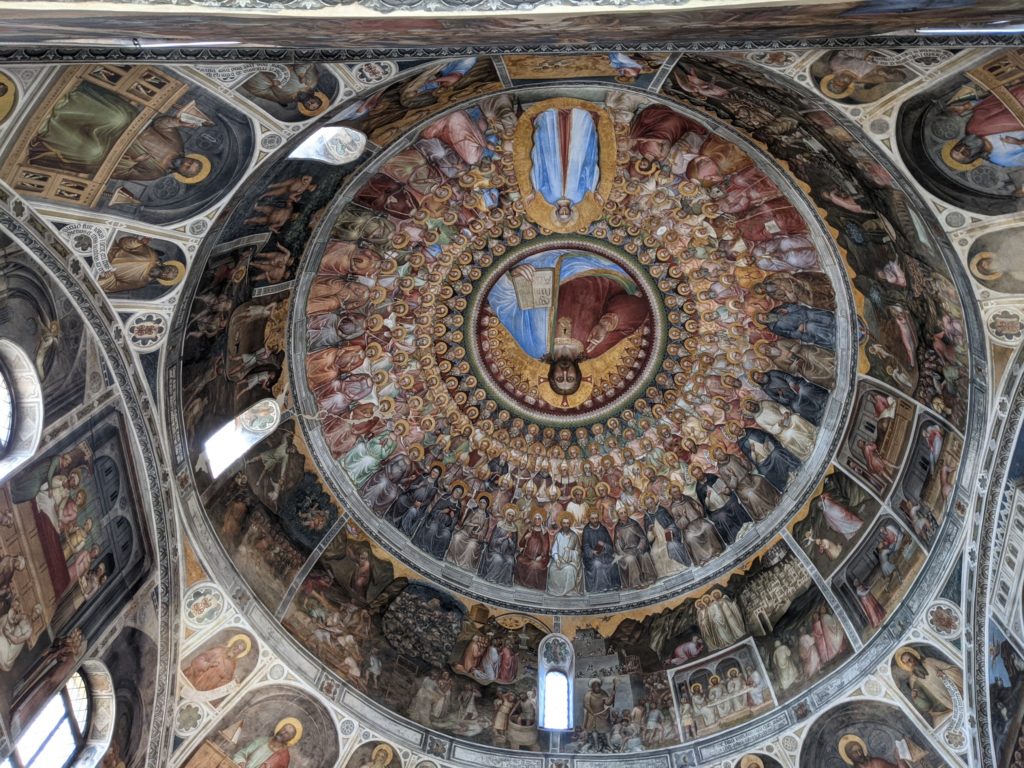
Baptistry ceiling 
Baptistry frescoes 
Baptistry frescoes
Palazzo Zuckerman focused on the history of decorative arts in Padova and was interesting to see. We took a short break in the park and then headed over to the Eremitani Museums, which include archeology and paintings. These were a good lead up to the main event, especially the interesting religious paintings at the Eremitani.

Padova pottery 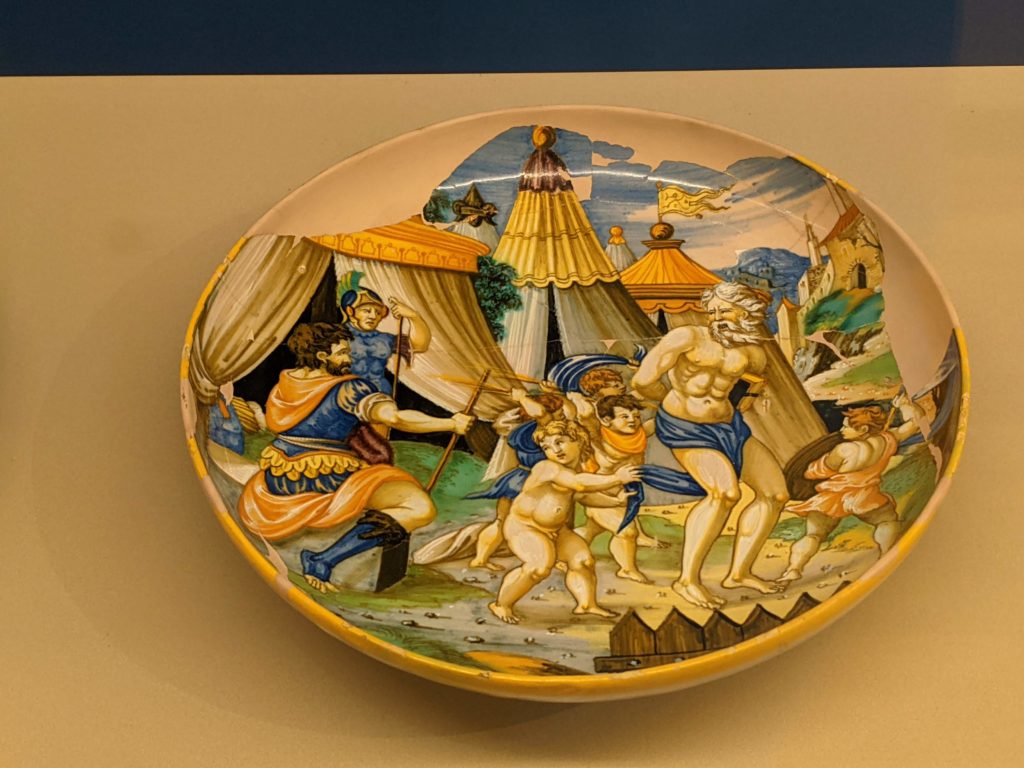
A favorite of Chad’s 
A favorite of Jaime’s 
Prosecco break in the park between museums 
More frescoes and info about WWII bombings at Cappella Ovetari 
Egyptian exhibit at Eremetani
Our designated time for the chapel was 5:30 p.m. The visit is very precisely timed, so you can’t be late. First you and the others in your time slot (there were about 12 people in ours) are brought into a climate controlled waiting room that was built to stabilize the temperature between the chapel and the outside. You watch a 15-minute video about it, which was interesting, and then you’re allowed in the chapel for 15 minutes. Luckily it is very small, because the frescoes by Giotto are extremely impressive and you really want to take them all in. The guide was helpful about answering questions and pointed out how to view the story of Christ’s life told in three tiers. It was very cool and even though getting our tickets were a lot of trouble, it was very well worth it.

In awe of the beautiful chapel 
Frescoes 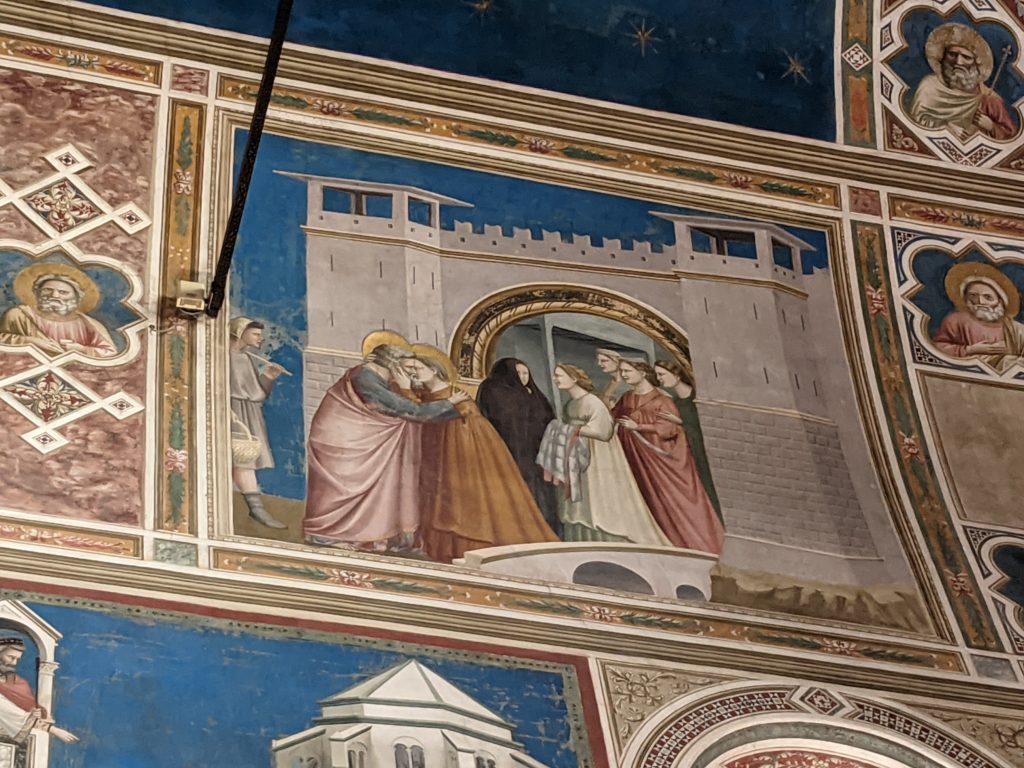
First kiss in Western art? That is their claim. It is Mary’s mother and father. 
Closer look at frescoes 
Charity 
Greed
At Home in Padova
While the sights we saw in Padova were very cool (and I’d highly recommend it as a day trip to anyone visiting Venice or Bologna), our deepest appreciation for the city was serving as our homebase for an incredible month. Our apartment was comfortable and interesting, we had great meals at home and dining out, and established a really great quality of life. I’m so glad we chose to spend a month in Padova and will always remember this time fondly.

Ingenious part of our apartment – the cabinet above the sink was the dish drying rack! 
A typical meal in 
An interesting lunch of focaccia, antipasti, and cheese 
Lasagna from the market hall 
We got these sandwiches at a deli – the maker was meticulous in placing the ingredients perfectly 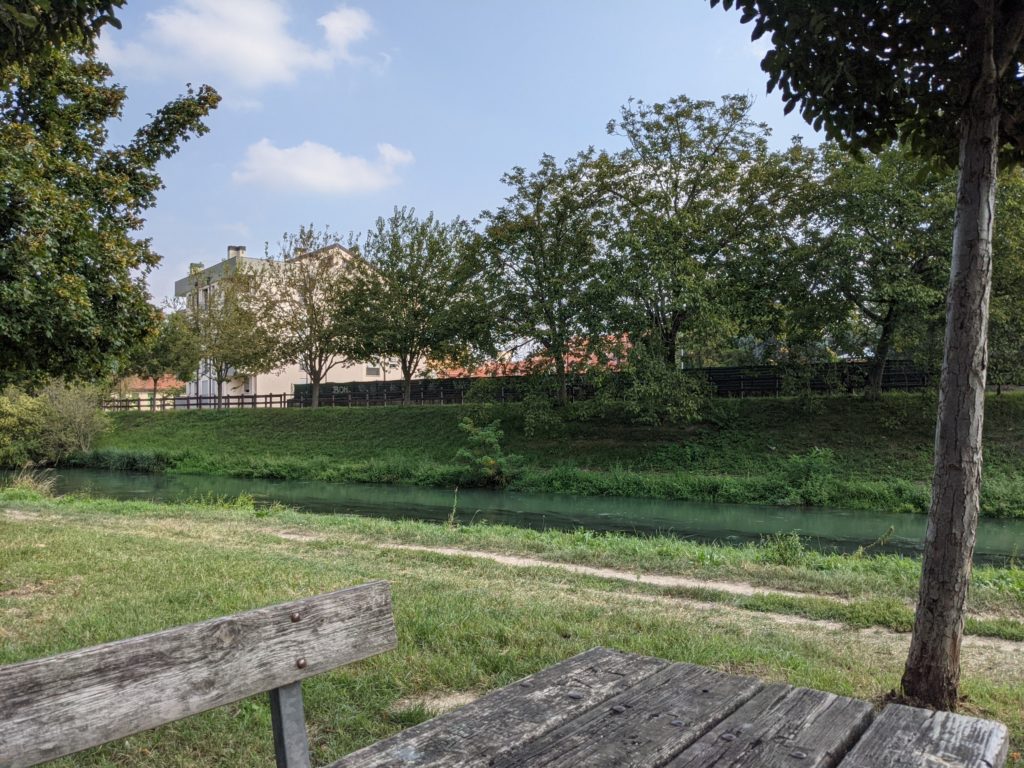
Our picnic spot for our deli sandwiches 
Of course we ate plenty of gelato 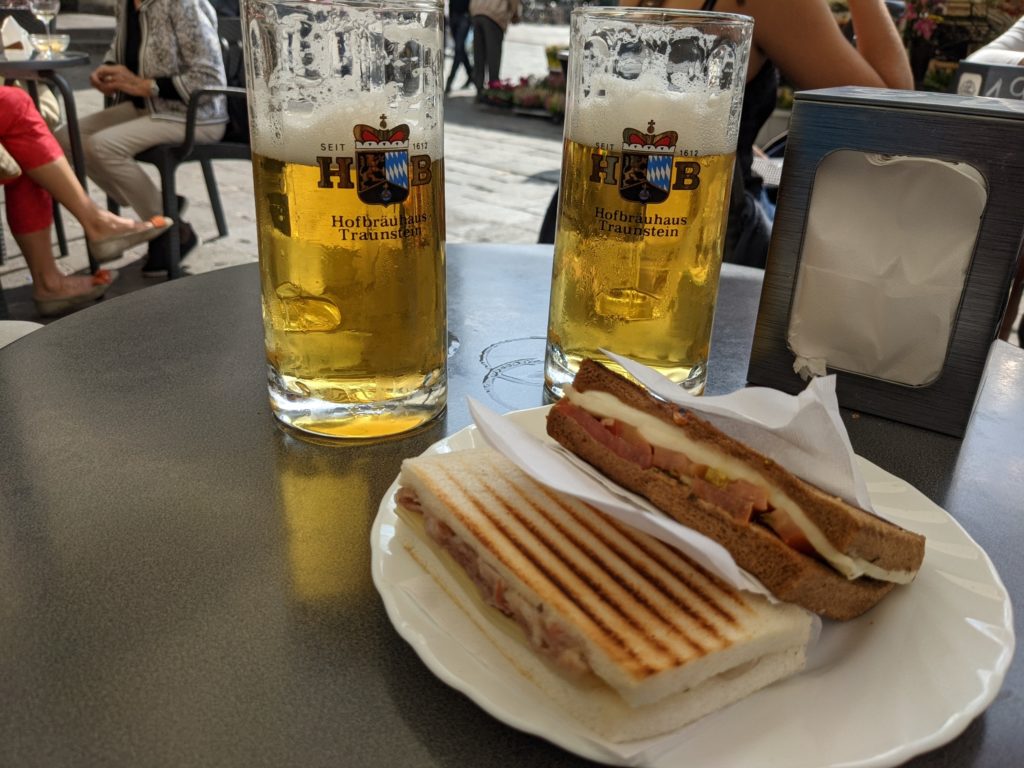
Lunch on our tourist day at Bar Nacionale on the square 
Discussing Giotti over drinks 
Fresh seafood streetfood served in the square 
You can get a table at the bar next door to eat it if you order drinks 
Drinks at Chad’s favorite bar – we also had dinner there our last night
AirBNB Review – My husband and I spent a month in Emanuela’s apartment and it was wonderful. Emanuela had great communication before and during our stay. The location is very close to the main piazzas and right next to the duomo church, so very convenient for experiencing Padova and its history. The kitchen was well-equipped for cooking and the rooms were spacious and comfortable. The apartment felt very special with its lovely art and high ceilings with the beautiful old beams. The wifi was a little pokey and occasionally would briefly flicker off, but it was fast enough for streaming and worked ok for video calls. We’re glad we chose to stay in this apartment and definitely recommend it for a short or long stay.






